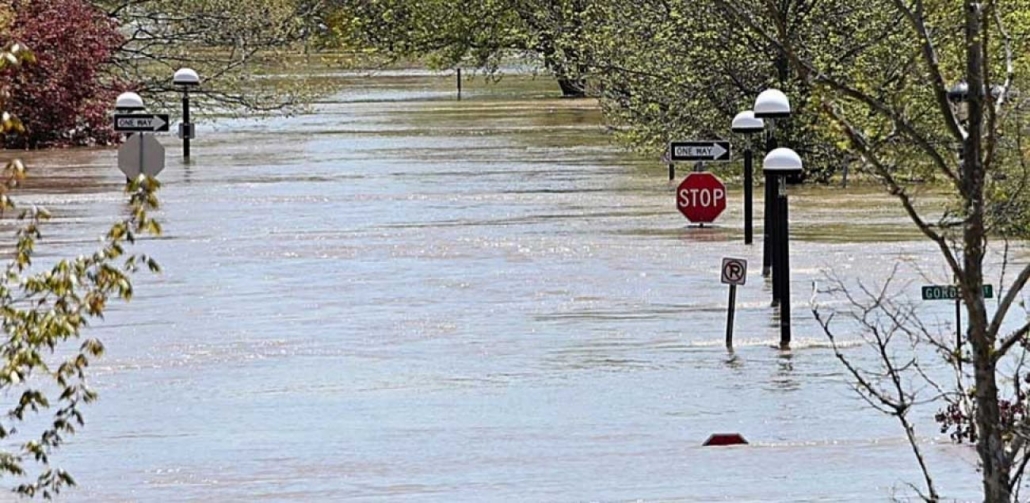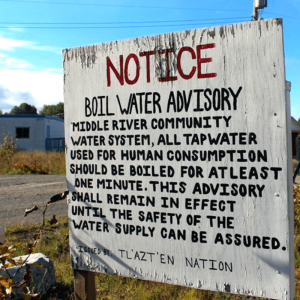The Great Lakes News Collaborative includes Bridge Michigan; Circle of Blue; Great Lakes Now at Detroit Public Television; and Michigan Radio, Michigan’s NPR News Leader; who work together to bring audiences news and information about the impact of climate change, pollution, and aging infrastructure on the Great Lakes and drinking water. This independent journalism is supported by the Charles Stewart Mott Foundation.
By Kelly House, Bridge Michigan
Michigan’s aging dams require “comprehensive and immediate attention” to avoid future tragedies like last summer’s Midland-area dam failures, a state task force has determined.
In a list of 86 recommendations released Thursday, the task force identified a host of regulatory, legal and funding fixes designed to fix aging dams and boost oversight and enforcement of dam safety.
Many of the recommendations would require changes to state law, and some would come with a price tag. All told, the task force identified funding needs totaling more than $420 million over 20 years. Recommendations also include ways to hold private dam owners financially responsible for keeping their dams safe.
Continuing to underinvest in dam safety, the report stated, “is a violation of the public trust, a path that leads to tragic losses of property and life and is ultimately more expensive to Michiganders.”
Among the task force’s dozens of recommendations:
- Change state law to require surveillance and monitoring plans for all high and significant hazard dams.
- Create a revolving loan fund to provide money for dam improvements, maintenance and removal, along with a grant program for scoping or design of projects to fix or remove dams.
- Create an emergency fund so state officials can fix hazards at dams if the dam owner can’t or won’t pay for repairs.
- Find more money to “substantially enhance dam removal.”
- Require dam owners to prove they can pay to safely operate and maintain or remove their dam, and require them to have insurance that could cover the cost of a catastrophic failure.
- Increase inspection frequency for high and significant-hazard dams.
- Change state law to meet the federal standard for design floods, and increase the state’s authority to step in and address dam safety issues.
- A host of other changes to Michigan law to improve dam oversight and give state regulators access to information about federally-regulated dams that they currently lack.
You can read the full report here.
State leaders, the task force concluded, “must take meaningful action to advance all of the recommendations — the potential human and economic costs of business as usual are too great to ignore.”
In a statement Thursday, Liesl Clark, director of the state department of Environment, Great Lakes and Energy, said the agency is “moving forward with changes we can make.” That includes hiring three dam safety engineers.
But many of the task force’s recommendations require legislative action. Task force member Bryan Burroughs, executive director of Michigan Trout Unlimited, a conservation group, said he expects the recommendations to serve as a template for future legislation.
Action, he said, is “imperative.”
“This problem has been evolving and getting worse for a long time,” Burroughs said. “If we can’t decide to get on top of this problem and start working on it now, shame on everybody later when a couple years from now another dam goes and somebody loses their life.”’
In a statement, Senate Environmental Quality Committee Chairperson Rick Outman said he’s “eager” to review the recommendations “so we can work together to make sure something like this never happens again.”
Whitmer convened the task force last year, after the Edenville and Sanford dams collapsed May 19 amid heavy rainfall following years of warnings from federal and state regulators that Edenville’s spillway could not withstand a large flood.
The failures devastated the Midland area, flooding downstream communities and forcing 11,000 people to evacuate, while causing $200 million in damages to more than 2,500 structures.
Michigan regulators had taken control of the Edenville dam in September 2018, after the Federal Energy Regulatory Commission revoked the permit dam operator, Boyce Hydro, LLC, to generate power. That decision followed decades of increasingly stern warnings to Boyce that it needed to bring the dam into compliance with federal flood safety standards.
Because Michigan’s dam safety standards are half as strong as the federal standard for high-hazard dams like Edenville, that created new problems. State regulators weren’t sure whether Edenville met the state’s threshold. The dam failed while they were awaiting a report that later concluded Edenville fell short of Michigan’s standards.
State task force members indicated other dams pose pressing safety concerns of their own. Michigan’s more than 2,600 dams represent “an aging inventory that requires comprehensive and immediate attention,” they wrote.
The report’s general thrust is similar to that of an October report by an independent review team with the Association of State Dam Safety Officials. That group concluded that Michigan’s dam safety program is underfunded, understaffed, and suffers from a “culture of minimal enforcement.”




